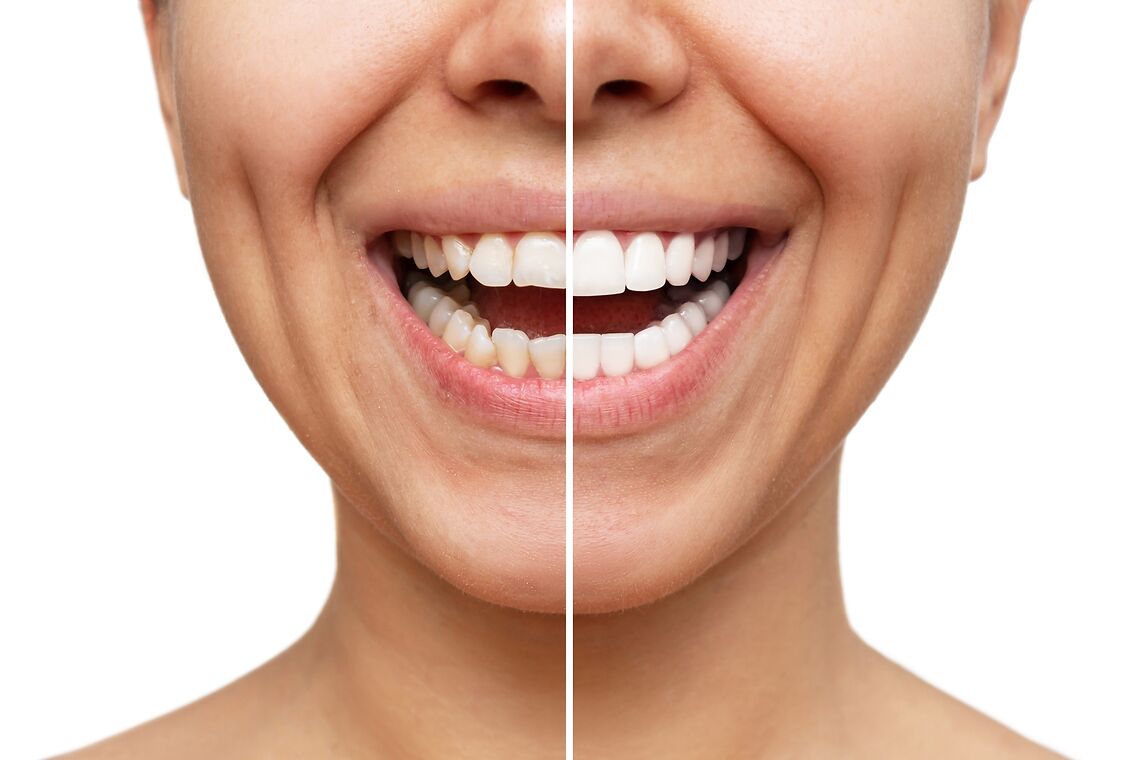Porcelain veneers are a popular cosmetic dental solution designed to enhance the appearance of your smile. These minimal prep restorations are crafted to cover the front and edge surfaces of your teeth, offering improvements in shape, color, and overall aesthetics. But how do porcelain veneers work, and what makes them an appealing choice for many patients?
 Photo Credit: Courtesy of Marina Demeshko/Shutterstock
Photo Credit: Courtesy of Marina Demeshko/Shutterstock
How Are the Right Shape, Size, and Color of Veneers Determined?
Designing porcelain veneers involves a meticulous planning process to ensure they perfectly suit each patient’s unique smile. The journey begins with an initial consultation, where dentists discuss the desired smile improvements with the patient. During this visit, a digital scan of the teeth is taken, along with various photos capturing different angles of the smile.
Following the consultation, the dentist creates a detailed wax model of the teeth, adhering to the golden ratio in dentistry to achieve the ideal length, width, and symmetry. At the second visit, temporary veneers are made using a template derived from the wax model. These temporary veneers allow the patient and dentist to assess aesthetics, phonetics, and function, ensuring the final design will meet all expectations. Once the final design is approved, the teeth are prepared for the application of the permanent veneers.
What Materials Are Porcelain Veneers Made From, and How Do They Compare to Other Types?
As the name suggests, porcelain veneers are made from high-quality porcelain. This material is favored for its ability to mimic the natural translucency and sheen of tooth enamel. Unlike resin veneers, which can change in size, color, and shine over time and are prone to chipping, porcelain veneers maintain their color stability and durability. Porcelain’s similarity to natural enamel makes it a superior choice for long-lasting aesthetic results.
How Should Patients Care for Their Porcelain Veneers?
Caring for porcelain veneers is similar to maintaining natural teeth. Patients should avoid using their veneers to cut objects or biting hard items like nails or pens. Regular dental hygiene practices, including brushing twice daily and flossing once a day, are recommended. Additionally, using an occlusal guard during sleep can help protect the veneers and extend their lifespan.
What Is the Expected Lifespan of Porcelain Veneers, and How Can Patients Maximize Their Durability?
Research indicates that approximately 90% of porcelain veneers remain in excellent condition after 10 years, and 85% continue to look great after 15 years when properly designed and planned. To maximize the durability of veneers, it is crucial to adhere to recommended care practices and follow up with routine dental check-ups.
What Are Some Common Misconceptions About Porcelain Veneers?
A common misconception is that prep-less veneers are the best option. In reality, most cases require at least minimal tooth modification to ensure a proper fit for the porcelain veneer. Minimally prep veneers, which involve conservative adjustments to the natural tooth, often provide a better result than prep-less options.
Porcelain veneers offer a transformative solution for achieving a beautiful smile with a natural look and long-lasting durability. By understanding how they work and adhering to proper care guidelines, patients can enjoy their enhanced smiles for many years to come. To learn more about porcelain veneers and how they can benefit your smile, schedule a consultation with Union Square Dental Practice today.
For more information, visit Union Square Dental Practice's social media:





















